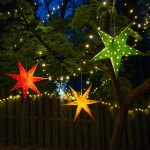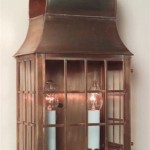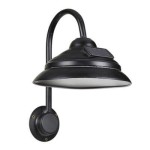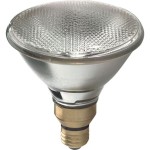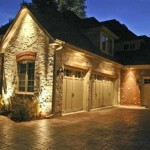Energy Saving Outdoor Lighting
Outdoor lighting plays a crucial role in enhancing the aesthetics and functionality of any property. However, traditional outdoor lighting fixtures often consume significant amounts of energy, leading to increased electricity bills and environmental impact. Fortunately, advancements in technology have paved the way for energy-efficient outdoor lighting solutions that offer substantial cost savings and environmental benefits. This article delves into the world of energy-saving outdoor lighting, exploring various options, key considerations, and practical tips for maximizing energy efficiency.
Types of Energy-Efficient Outdoor Lighting
The market for outdoor lighting offers a wide range of energy-efficient options, each with its own advantages and disadvantages. Some of the most popular choices include:
1. LED Lighting
LED (Light Emitting Diode) lighting has become a standard in energy-efficient outdoor lighting due to its exceptional energy savings and long lifespan. Compared to traditional incandescent bulbs, LEDs consume up to 80% less energy while producing the same amount of light. Furthermore, LEDs boast a lifespan of up to 50,000 hours, significantly reducing the need for frequent bulb replacements.
2. Solar-Powered Lights
Solar-powered lights harness the power of the sun to illuminate outdoor spaces. These lights are equipped with solar panels that convert sunlight into electricity, storing it in batteries for use at night. Solar lighting eliminates the need for electrical wiring and offers a sustainable alternative to traditional outdoor lighting, especially in areas with ample sunlight.
3. Motion Sensor Lights
Motion sensor lights are designed to activate only when motion is detected, reducing energy consumption by illuminating outdoor spaces only when needed. These lights are particularly useful for illuminating walkways, driveways, and other areas where frequent lighting is not required. Furthermore, motion sensor lights can enhance security by deterring potential intruders.
Key Considerations for Energy-Saving Outdoor Lighting
Choosing the right energy-efficient outdoor lighting involves careful consideration of several factors:
1. Luminance and Light Distribution
The level of brightness and the direction of light emitted by outdoor lighting fixtures significantly influence energy consumption. Choosing appropriate luminance levels ensures adequate visibility without over-illumination. Proper light distribution helps direct light where it's needed, minimizing light pollution and wasted energy.
2. Color Temperature
The color temperature of light, measured in Kelvin (K), affects the overall ambiance and perceived brightness. Warm white light (2700-3000K) is ideal for creating a cozy and inviting atmosphere, while cool white light (4000-4500K) provides a more energizing and clear illumination. Selecting the appropriate color temperature can enhance energy efficiency by minimizing the need for excessive light output.
3. Fixture Design
The design of outdoor lighting fixtures plays a vital role in energy efficiency. Choosing fixtures with efficient reflectors and lenses helps direct light effectively, reducing light pollution and improving overall energy savings. Additionally, consider the durability and weather resistance of the fixtures to ensure longevity and optimal performance.
Tips for Maximizing Energy Savings
To maximize energy savings from outdoor lighting, implement these practical tips:
1. Use Timers and Dimmers
Utilize timers to automatically turn on and off outdoor lighting at designated times, minimizing unnecessary energy consumption. Dimmers provide a simple way to adjust the brightness levels, allowing for personalized light output and energy savings.
2. Minimize Light Pollution
Direct light downwards towards the intended area, minimizing upward light spill and reducing light pollution. Use shielded fixtures and carefully consider the placement of lights to reduce glare and unnecessary illumination.
3. Choose the Right Bulb Wattage
While LED bulbs are inherently energy-efficient, it’s important to select the appropriate wattage for each fixture. Consider the specific needs of each location and choose bulbs that provide adequate lighting without overusing energy.
4. Install Smart Lighting Systems
Smart lighting systems offer advanced control and automation features, allowing users to manage outdoor lights remotely and adjust schedules and brightness levels as needed. Smart lighting systems can significantly enhance energy efficiency by optimizing lighting usage based on occupancy and ambient conditions.
Energy-efficient outdoor lighting provides a cost-effective and sustainable solution for illuminating outdoor spaces while minimizing environmental impact. By adopting these energy-saving practices, property owners can significantly reduce their energy consumption, conserve resources, and create a more eco-friendly environment.

Energy Efficient Outdoor Lighting Constellation

Energy Efficient Outdoor Lighting Ideas Advice Lamps Plus

How To Increase Commercial Energy Efficiency With Outdoor Lighting Controls Cur Gli Brands

Use Energy Efficient Outdoor Lighting To Make The Summer Nights Brighter Wire By Xoom

How To Go Green With Your Outdoor Lighting

Outdoor Energy Saving Light 100w 200w 300w 400w All In One Solar Street Led Lamp Lights With Panel China Made Com

How To Create The Perfect Ambience With Outdoor Lighting

Energy Saving Outdoor Lighting Led Street Light Solar Wall Lamp China Lights Made In Com

3 Tips To Maintain Outdoor Lighting Energy Efficiency During Winter

5 Energy Efficient Outdoor Lighting Tips Skyfrog Landscape
Related Posts
